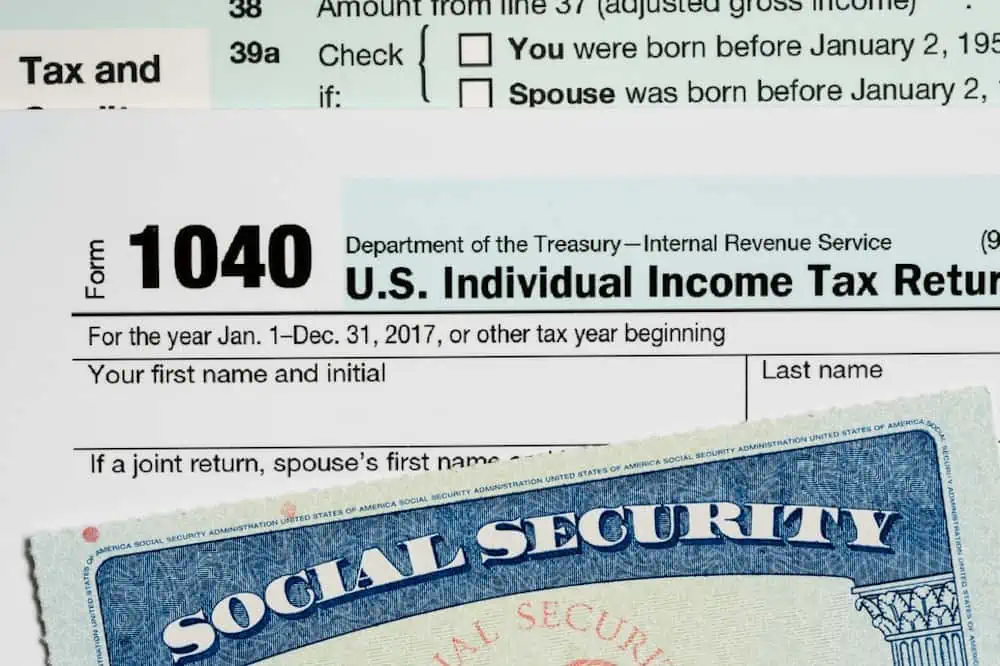Many of marriage’s benefits are emotional and psychological, but the union of two souls famously offers some legal and financial advantages, too.
Today, I’m going to focus on one of the potential financial benefits of getting married: Social Security spousal benefits.
When it comes time to collect retirement benefits, a married individual might qualify for a Social Security spousal benefit—and that benefit very well might be higher than what they would be eligible to receive on their own.
Read along as I explain what Social Security spousal benefits are, who qualifies for them, how much they’re worth, and other common questions on the subject.
Table of Contents
What Are Social Security Spousal Benefits?

Social Security spousal benefits pay eligible spouses a portion of their partner’s Social Security retirement or disability benefits.
This is an extremely useful benefit in a couple of situations: Namely, when only one half of a married couple qualifies for Social Security, or when one person qualifies for a substantially larger benefit from the other.
A few important notes:
— Receiving spousal benefits does not reduce your spouse’s benefit.
— Ex-spouses qualify in some situations
— Spousal benefits are different from Social Security survivor benefits
If you receive spousal benefits, it doesn’t reduce your spouse’s benefit amount. This system is useful when only one half of a married couple qualifies for Social Security or when one person qualifies for a substantially larger benefit from the other.
In some situations, ex-spouses qualify as well. Note that spousal benefits are different from Social Security survivor benefits.
Related: Don’t Believe These 17 Social Security Myths
Who Qualifies for Social Security Spousal Benefits?

To qualify for a spousal benefit, your spouse must receive Social Security retirement or disability benefits. Additionally, you must meet at least one of the following criteria:
— Be at least 62 years old
— Have a child under the age of 16 years old who is in your care, or have a child of any age with a disability and who is entitled to benefits on your spouse’s record
Perhaps you spent many years raising children or taking care of an older relative taking care of an older relative, or for some other reason you didn’t have many years of paid employment. If so, you might not have enough Social Security credits to receive a retirement benefit, or you might only qualify for a low benefit amount. Spousal benefits might provide a higher level of retirement income.
Related: Here’s How Much The Average Gen-Xer Has Saved For Retirement. The Number Might Surprise You
Can I Get a Spousal Benefit If I’m Divorced?

Some divorced individuals are eligible to receive retirement benefits on their former spouse’s record.
To be eligible, you must have been married for at least 10 years (some valid non-marital legal relationships qualify). Additionally, you must meet at least one of the following criteria:
— Be at least 62 years old
— Be caring for a minor age 15 or younger
— Be caring for a child of any age who has a disability
You can’t get spousal benefits from a former spouse’s record if you remarry a different person unless that marriage ends by divorce, annulment, or death. (But it doesn’t matter if your former spouse gets married again—both you and their current spouse can draw from your former spouse’s record.)
Also, if for whatever reason you’re worried that your ex-spouse will learn that you’re receiving spousal benefits, take comfort in knowing they will not be informed.
Related: Is Your Retirement on Track? Here Are the Average 401(k) Balances By Age
How Are Social Security Spousal Benefits Calculated?

The maximum spousal benefit amount is 50% of the amount the other spouse is eligible to receive when they reach normal retirement age (or officially, full retirement age, or FRA). Your full retirement age varies depending on the year in which you were born.
The current brackets for one’s normal retirement age are as follows:
— Born between 1943 to 1954: 66
— Born in 1955: 66 and 2 months
— Born in 1956: 66 and 4 months
— Born in 1957: 66 and 6 months
— Born in 1958: 66 and 8 months
— Born in 1959: 66 and 10 months
— Born 1960 or later: 67
(Editor’s Note: If your birthday falls on the first of a month, your benefit and FRA are determined as if you were born in the previous month. Example: If you’re born on March 1, your benefit and FRA would be calculated as if you were born in February.)
If you elect to take spousal benefits once you reach FRA, you will receive your full benefit amount (50% of what your spouse was eligible to receive at their normal retirement age). The spousal benefit doesn’t increase if you delay receiving benefits, nor if your spouse waits and earns delayed retirement credits.
However, if you choose to have an early retirement and begin collecting before your full retirement age, you will receive a permanently reduced benefit unless you care for a child and either:
— That child is under age 16
— That child has a disability and is entitled to benefits on your spouse’s record
Related: The Best Fidelity Retirement Funds
When Should You Claim Social Security Spousal Benefits?

As I just mentioned, the youngest age you can collect your benefit is 62 years old (assuming you aren’t caring for a child). However, collecting at that age might reduce your benefit to as low as 32.5% of your spouse’s primary insurance amount.
The spousal benefit is reduced 25/36ths of 1% for each month before full retirement age, up to 36 months. If you retire more than 36 months ahead of FRA, benefits will be reduced at a rate of 5/12ths of 1% for each additional month past the 36-month mark.
For example, if you were born in January 1960 and you wanted to start receiving benefits in January 2026, that date marks one year before you would reach full retirement age. Thus, your benefit would be reduced by 25/36ths of 1% for 12 months, giving you a final benefit of 45.84% of your spouse’s primary insurance amount.
To receive the highest spousal benefit possible, you should wait until your full retirement age. Waiting one more year until your full retirement age would improve your benefit to a full 50% of your spouse’s primary insurance rate (as high as it goes). But again: There is no advantage to waiting longer than your full retirement age.
Related: 13 Best Mutual Funds to Buy
How to Apply for Social Security Spousal Benefits

When you apply for spousal benefits, you’re by default also applying for retirement benefits based on your personal work history. If your own benefit is higher, that’s what you receive. If it’s lower, the Social Security Administration provides “a combination of benefits that equals the higher spouse’s benefit.”
You can apply for a spousal benefit once you are at least 61 and 9 months old by visiting the Social Security website. If you and your spouse both have a My Social Security account, you can see an estimate of the spousal benefit you may receive.
Within your account, scroll to the “Plan for Retirement” section and select one of the following:
— See what you could receive from a spouse (choose this if you aren’t eligible for your own retirement benefit)
— Include a spouse? (choose this if you’re eligible for your own retirement benefits)
Then, you choose an age or date when you would want to start receiving your spousal benefit. Finally, you enter your spouse’s retirement benefit estimate at their full retirement age or worker’s primary insurance amount. This number can be found in your spouse’s My Social Security account in the Plan for Retirement section.
Related: Do I Need a Financial Advisor? 7 Questions to Ask Yourself
Related: 11 Ways To Avoid Paying Taxes on Your Social Security

If you’re looking to minimize the tax bite taken out of your Social Security benefits in retirement, you’ve got several available actions to reduce how much you pay each year. We outline several ways to avoid paying taxes on your Social Security benefits.
Related: How Are Social Security Benefits Taxed?

In many cases, Social Security benefits are subject to federal taxation. To learn how your Social Security benefits are taxed, we’ve got an entire guide to walk you through the calculation.
Related: 10 States That Tax Social Security Benefits

While most states don’t subject Social Security benefits to taxation, at least 10 states do tax Social Security. To see if you live in one of them, or you’re considering a relocation for retirement and taxation of your Social Security is a sticking point, we’ve got you covered with all of the details.
Related: 9 Best Monthly Dividend Stocks for Frequent, Regular Income

The vast majority of American dividend stocks pay regular, reliable payouts—and they do so at a more frequent clip (quarterly) than dividend stocks in most other countries (typically every six months or year).
Still, if you’ve ever thought to yourself, “it’d sure be nice to collect these dividends more often,” you don’t have to look far. While they’re not terribly common, American exchanges boast dozens of monthly dividend stocks.
Please Don’t Forget to Like, Follow and Comment

Did you find this article helpful? We’d love to hear your thoughts! Leave a comment with the box on the left-hand side of the screen and share your thoughts.
Also, do you want to stay up-to-date on our latest content?
1. Follow us by clicking the [+ Follow] button above,
2. Subscribe to The Weekend Tea, our weekly newsletter to read more about investing, spending, taxes, and more, and
3. Give the article a Thumbs Up on the top-left side of the screen.
4. And lastly, if you think this information would benefit your friends and family, don’t hesitate to share it with them!





